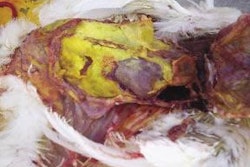The March update of egg industry statistics, including USDA Economic Research Service values assembled by Don Bell of the University of California, Riverside, represents a comprehensive collection of data providing a perspective of the recent history and trends in production and profit.
The key values include:
- Eggs in incubators (35.2 million) during February 2009 represented a 1% decline over the corresponding month in 2008 and a 4% decline over January 2009.
- The hatchery supply flock has remained fairly constant, ranging from 2.6 to 2.7 million hens during the past six months.
- As of Feb. 1 there were 283.5 million hens in lay at an average of 74.9% hen/month production.
- The national flock is forecast to decline to a low of 281.2 million in August 2009 but will show a seasonal rise to 285.0 million in December.
- During February 2009, 25% of the flock had completed a molt.
At the beginning of 2009, the national flock was located in the following states in the proportions as indicated: Iowa (19%); Ohio (10%); Indiana (8%); Pennsylvania (8%); California (7%); Texas (5%).
During January 2009, 5.422 million cases were broken, representing 29.9% of production compared to a monthly average of 5.689 million cases during 2008 (31.9% of production).
Exports, consumption down
Exports of shell eggs during 2008 amounted to 1,918 thousand cases or 0.9% of production, down 26% from the record achieved in 2007. Significant markets were Canada (43%) and Hong Kong-PRC (30%) denoting a reliance on these two destinations. Exports of egg products in 2008 were equivalent to 3,108 thousand cases or 1.5% of production. Japan (32%); Germany and Canada (10% each) and Mexico (8%) were the major importers.
Domestic U.S. consumption in 2009 will attain 245.3 per capita, compared to 248.3 and 250.1 eggs in 2008 and 2007 respectively.
Feed is 60% of costs
Average production costs for the first two months of 2009 amounted to 58.7 cents/dozen. The principal components of cost derived from USDA data were:
- feed (60%);
- pullet depreciation (14%); and
- other fixed and variable costs (26%).
Given a two-month average egg price for nest-run of 76.8 cents/dozen, producers generated a contribution margin of 18.1 cents/dozen into their plants. It is noted that the average USDA mid-month egg price declined by 29% from a January value of 89.6 cents/dozen to 63.9 cents/dozen in February 2009. This lowered monthly contribution from 58 cents/hen in January to 8.8 cents/hen in February. The average egg price for 2008 as reported by USDA was 93.4 cents/dozen ranging from a high of 130 cents/dozen in March to a low of 66.8 cents/dozen in July.
Variable prices throughout 2009
Urner-Barry, Mid-West, Large grade prices are forecast to decline from a projected price of 111.1 cents/dozen in March to a seasonal low of 88.8 cents/dozen in May. Over the summer months, prices are expected to rise 95 to 97 cents/dozen but complete the year at 116.4 cents/dozen through November and December.


















